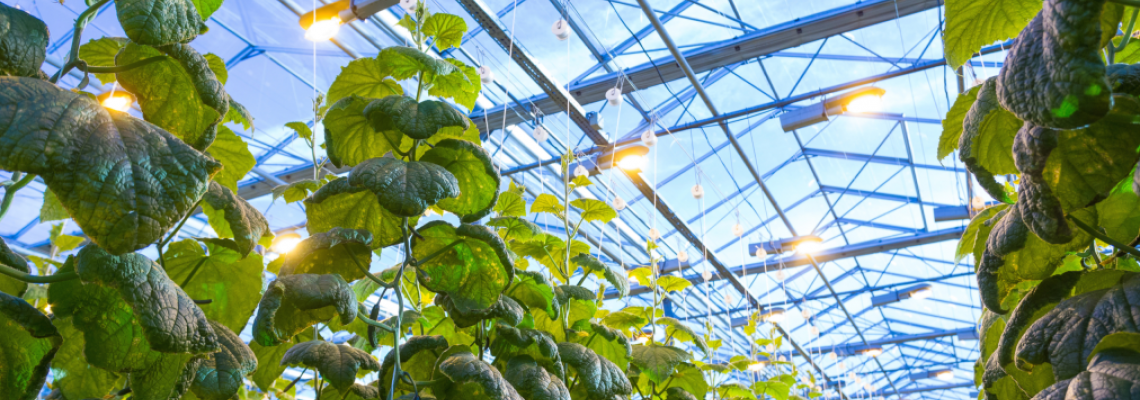
Lighting plays a vital role in every aspect of modern life from homes and offices to industries and agriculture. As the demand for reliable illumination grows, so does the need to make smarter choices about the type of lighting we use. Today, it’s no longer just about brightness or electricity bills; it’s also about sustainability and environmental impact.
For decades, fluorescent lamps and High-Pressure Sodium (HPS) lights were the standard solution. While they delivered effective illumination, these fixtures came with a hidden cost: mercury. This toxic heavy metal poses significant risks to human health and the environment. Improper disposal of mercury-based lamps can contaminate soil and water, harming ecosystems and even entering the food chain.
Fortunately, a safer and more efficient alternative has emerged LED (Light-Emitting Diode) lighting. Unlike traditional systems, LEDs contain no mercury, making them eco-friendly and far less hazardous. They also deliver superior energy efficiency, consume less power, and last significantly longer, reducing both waste and carbon footprint.
This article compares the environmental consequences of mercury-based lighting with the benefits of LEDs, highlighting why the global shift toward LEDs isn’t just an economic upgrade, it’s a vital step toward a cleaner, safer, and more sustainable future.
The Mercury Problem in Traditional Lighting
Mercury has long been used in lighting technologies such as fluorescent tubes, compact fluorescent lamps (CFLs), and HPS lamps. While these lights helped revolutionize affordable, large-scale illumination, their reliance on mercury comes at a high cost.
1. Toxicity and Human Health Risks
Mercury is highly toxic. Exposure can damage the brain, nervous system, kidneys, and lungs. Even small amounts can pose risks, especially to children and pregnant women. When a bulb breaks, mercury vapor can be released into the air, contaminating indoor spaces.
2. Environmental Pollution
Improper disposal of mercury-based lights is a major issue. Many bulbs end up in landfills, where mercury leaches into soil and groundwater, contaminating ecosystems and entering the food chain. Mercury pollution in rivers and lakes can accumulate in fish, posing risks to wildlife and human consumers alike.
3. Hazardous Waste Management
Because mercury is classified as hazardous waste, the disposal and recycling of traditional lighting requires specialized facilities. Unfortunately, proper recycling rates are low, and billions of lamps are discarded improperly each year. This adds to the growing problem of toxic waste management globally.
The Rise of Eco-Friendly LEDs
LED technology is widely recognized as the most sustainable lighting solution available today. Unlike mercury-based lamps, LEDs are free of toxic substances and offer a much smaller environmental footprint.
1. No Mercury Content
One of the most significant advantages of LEDs is that they do not contain mercury. This eliminates the risk of toxic exposure during use, breakage, or disposal. It also makes LEDs easier and safer to recycle compared to traditional lighting.
2. Energy Efficiency
LEDs use up to 80% less energy than incandescent bulbs and significantly less than HPS or fluorescent lamps. Lower energy consumption reduces greenhouse gas emissions from power plants, making LEDs a critical technology for climate change mitigation.
3. Longer Lifespan
The average LED lasts 50,000 hours or more, compared to just 10,000–20,000 hours for HPS lamps and even less for fluorescents. This extended lifespan reduces the number of bulbs that need to be manufactured, transported, and disposed of—cutting down waste and resource consumption.
4. Lower Carbon Footprint
LED production and operation contribute to fewer CO₂ emissions overall. A combination of reduced energy demand and longer service life makes LEDs a cornerstone of eco-friendly infrastructure.
Mercury vs. LEDs: A Side-by-Side Comparison
The Global Push Toward LED Adoption
Recognizing the environmental hazards of mercury-based lighting, many governments and organizations are phasing out traditional lamps in favor of LEDs.
Minamata Convention on Mercury: A global treaty signed by over 120 countries to reduce mercury pollution. It includes the phase-out of many mercury-containing products, including lighting.
Regulatory Bans: The European Union, for example, has restricted the sale of many fluorescent and mercury-based lamps, pushing consumers and businesses toward LEDs.
Incentives for LED Adoption: Many regions offer tax credits, rebates, and subsidies to encourage the transition to energy-efficient, eco-friendly lighting systems.
The Bigger Picture: Sustainability Beyond Energy Savings
LEDs represent more than just a technical upgrade they symbolize a shift toward circular economy principles. By reducing hazardous materials, cutting waste, and lowering energy demand, LEDs align with global goals for sustainability, climate action, and healthier ecosystems.
For industries like horticulture, where lighting is used intensively, LEDs provide even greater value. They reduce operational costs while minimizing the ecological footprint, supporting both profitability and environmental responsibility.
Why LEDs Are the Future
The choice between mercury-based lighting and LEDs is no longer about preference it’s about responsibility. With clear evidence of mercury’s dangers and growing support for eco-friendly alternatives, LEDs are set to dominate global lighting.
Safer for people: No toxic vapors or health risks.
Safer for the planet: Reduced pollution and lower carbon emissions.
Better for business: Energy savings, long lifespans, and compliance with regulations.
As industries, businesses, and individuals make the switch, the cumulative benefits will be enormous cleaner air, safer ecosystems, and reduced energy demand worldwide.
Conclusion
The debate of mercury hazards vs. eco-friendly LEDs is more than a technological comparison it’s a matter of environmental stewardship. Traditional lighting with mercury may have served us in the past, but its risks to human health and ecosystems can no longer be ignored.
LEDs are the clear solution: efficient, long-lasting, mercury-free, and aligned with global sustainability goals. By making the transition today, we not only reduce electricity costs and improve performance but also take an essential step toward a cleaner, healthier future.
The light we choose today will shape the world we live in tomorrow and with LEDs, that future looks brighter, safer, and greener.

1 Comment(s)
1
Leave a Comment